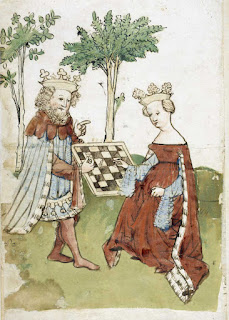Early Chess (1500-1600)

In the 16 th century, a manuscript now in Perugia, Italy described a new chess piece called “Amazon.” This unorthodox piece combined the powers of a rook, bishop, and knight. This piece was sometimes used up to the 18 th century as a substitute for the queen. In Vida’s famous poem, the queen was sometimes called the Amazon, probably the first use of this word to describe a chess piece. (source: Hooper, p.13) For the rest of the 16 th century, “Amazon” cropped up as an alternative term for “chess queen” in various European languages. (source: Yalom, p. 218) Around 1500, the Gottingen manuscript was written. It is the earliest known work devoted entirely to modern chess. It is a Latin text of 33 pages (leaves). The manuscript received its name because it was discovered in the library of the Gottingen university by Professor Oesterley in 1869. It contains 12 games or openings and 30 problems. It may have been written by Lucena. (source: Monté, p. 74) The

